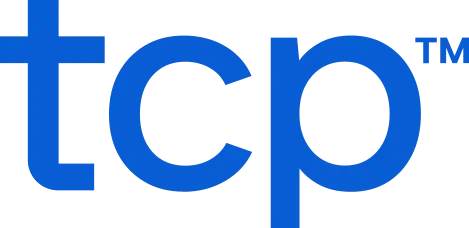Picture this: in your city’s biggest hospital, flu season hits harder than expected.
Nurses pick up double shifts, overtime costs soar, and call-ins from burnout hit just at the peak of patient volume. Administrators are left scrambling to hire contract staff at double the cost, while current staff pull overtime to ensure patient coverage.
This is where labor forecasting can make or break your scheduling strategy. Done right, forecasting helps you ride demand spikes without drowning in overtime or leaving critical shifts uncovered. Done wrong, and you’re like the hospital in our example — out of time and out of favorable options.
Here, we’ll break down why labor forecasting matters to your organization, how to create a labor forecast, and best practices to improve your forecasting.
Why do you need labor forecasting?
Labor forecasting (also known as demand forecasting) is a workforce management method that predicts future staffing needs based on historical data, current trends, and real-time signals. By analyzing past trends and real-time signals, managers can use labor forecasting plan ahead, staff fairly, and avoid costly last-minute decisions.
A solid forecast allows you to ride demand spikes without drowning in overtime or scrambling to fill shifts. The goal is balance — enough people to serve customers and meet safety standards, but not so many that payroll balloons.
Competition for talent is fierce and intense, and hiring mistakes are expensive:
- Overstaff, and you pay workers to stand around
- Understaff, and customer service or delivery timelines suffer
Demand forecasting capabilities in scheduling software show managers who is available, who has approved time off, and where labor law compliance lies. Good forecasts organize data in schedules and long-range workforce plans.
Below are the building blocks that turn raw numbers into actionable labor forecasts.
What are the 4 principles of forecasting?
Every forecast considers the past, present, and future while making the insights applicable to your workforce.
Principle 1 – Historical data
Past sales, patient counts, or call volumes reveal patterns. A restaurant that tracks demand can prepare for service spikes, reducing staff anxiety. A manufacturing plant, on the other hand, might notice production slowdowns that always follow holiday weekends and use that data to stagger shifts more effectively the next year.
Principle 2 – Consistency with review
A forecast should change with business growth. Seasonal shift schedules, new products, or market expansion require updates. Regular reviews keep the forecast useful instead of outdated.
Principle 3 – Relevant variables
Variables provide context. Local events, public holidays, new labor laws, or even the weather can reshape demand. For instance, a city festival increases foot traffic for businesses, while flu season boosts healthcare visits. Adding these variables turns a static forecast into a proactive business plan.
Principle 4 – Transparency through documentation
Keep staff organized and aligned. Record how each forecast was created and why you adjusted numbers or strategies. Clear notes make patterns repeatable, help train new managers, and satisfy auditors who may need to see your work.
How to forecast labor
Labor forecasting is about aligning your workforce with business needs. The goal is to have enough staff to meet demand without overextending your budget or stretching your team too thin. Forecasting is one of the most significant levers in employee scheduling. The basic equation is:
Staff Required = Projected Demand ÷ Productivity Rate
For example, if a retail store anticipates:
- 1,000 customers (projected demand) during a sale
- One associate can handle 40 transactions per shift (productivity rate)
- Staff required to meet demand: 1,000 ÷ 40 = 25 staff shifts
That is just the starting point.
A solid forecast layers in context: historical data, average productivity, employee availability, task management, and upcoming events. Leave management systems help by showing who is scheduled for time off, who is available, and any scheduling limits based on contracts or regulations.
A forecast might suggest ten workers, but if three are ineligible due to training or leave, the actual schedule needs to adjust.
What are the three major approaches for forecasting?
There are three main approaches to forecasting, and each one has strengths depending on your goals and data.
Quantitative forecasting
This method uses historical data and statistical models to estimate staffing needs. It works best with strong records and consistent trends.
For example, a hospital that tracks patient volume year over year can forecast nurse staffing. A school district can also use enrollment and attendance records to predict substitute teacher demand during flu season or exam periods.
Qualitative forecasting
This approach relies on people first, not just data. If you’re opening a new location, launching a product, or facing unpredictable demand, managers’ insights and team feedback can be more accurate than past data.
A construction firm, for instance, may depend on project managers’ input about weather delays or permit approvals that affect when crews need to be on site. In education, principals and district leaders may anticipate higher substitute demand during the holiday or testing season, even if the data hasn’t yet reflected the uptick.
Hybrid forecasting
This approach combines quantitative and qualitative forecasting. You start with data-driven predictions and adjust based on what managers know about current events, customer behavior, or seasonal shifts.
A retail store might use sales reports to estimate traffic, then adjust for a parade or street fair that weekend. In public safety, an agency may forecast typical call volumes but adjust schedules when large-scale community events or severe weather are expected.
How do you use labor forecasting in employee scheduling and compliance?
Labor forecasting gives you a plan. It helps managers schedule shifts that meet demand while following labor laws and company policies.
Once you have your forecast, employee scheduling software helps assign hours fairly. That means planning for required breaks, avoiding overtime, and balancing skills and certifications. If your forecast shows 12 staff needed on a Saturday, the system can help fill those spots while keeping everyone within their limits.
Forecasting also supports fairness.
Employees can view open or trade shifts and update availability through self-service capabilities. So, they gain more control while helping managers cover every shift to reducelabor shortages. And if a compliance issue ever comes up, you have documentation showing how staffing decisions were based on business needs.
Best practices for effective labor forecasting
To get the most out of labor forecasting, treat it as a living process. The best forecasts are regularly reviewed, tested, and improved:
- Compare forecasted vs. actual outcomes and look for patterns
- Involve managers who can flag issues early that data might miss
- Factor in legal and operational rules so forecasts align with what’s possible
- Let employees update availability and self-service request time off
- Track forecast accuracy over time and adjust as needed
Harvard Business Review found that businesses reviewing forecasts monthly can cut labor costs by up to 18 percent. Small tweaks add up.
How can technology improve labor forecasting?
Software makes labor forecasting faster, more accurate, and easier to manage.
Instead of pulling data manually, forecasting software can scan sales history, time-off calendars, weather reports, and even foot traffic trends. It processes all this and gives managers real-time recommendations that update as conditions change.
With solutions like TCP Software, organizations can connect labor (demand) forecasting to scheduling and compliance systems. If someone takes leave or hits their maximum weekly hours, the system updates automatically. It accounts for union rules, labor regulations, required breaks, and certifications, all without digging through spreadsheets.
Deloitte reports that companies using AI for automated employee scheduling cut staffing inefficiencies. In industries like retail, healthcare, or manufacturing — where demand shifts quickly — automation is becoming a standard, not an exception.
Take the next steps for your labor forecasting
Labor forecasting is the foundation of smart workforce planning. It helps you avoid costly mistakes, manage shifts fairly, and stay ahead of changing business needs. Whether you are running a small team or managing operations across locations, forecasting helps you work smarter and plan with confidence.
When you unlock the potential for labor forecasting through automated scheduling software, it becomes easier to adapt quickly and stay compliant. You go from reactively filling shifts as changes occur, to getting ahead of changes before they happen.
Check out how TCP’s AI-powered scheduling with Humanity Schedule’s Demand Scheduler can take the guesswork out of staffing and demand forecasting.
TCP Software’s employee scheduling and time and attendance solutions have the flexibility and scalability to suit your business and your employees, now and as you grow.
From TimeClock Plus, which automates even the most complex payroll calculations and leave management requests, to Humanity Schedule for dynamic employee scheduling that saves you time and money, we have everything you need to meet your organization’s needs, no matter how unique. Plus, with Aladtec, we offer 24/7 public safety scheduling solutions for your hometown heroes.
Ready to learn how TCP Software takes the pain out of employee scheduling and time tracking? Speak with an expert today.
What to read next
Explore all resources



